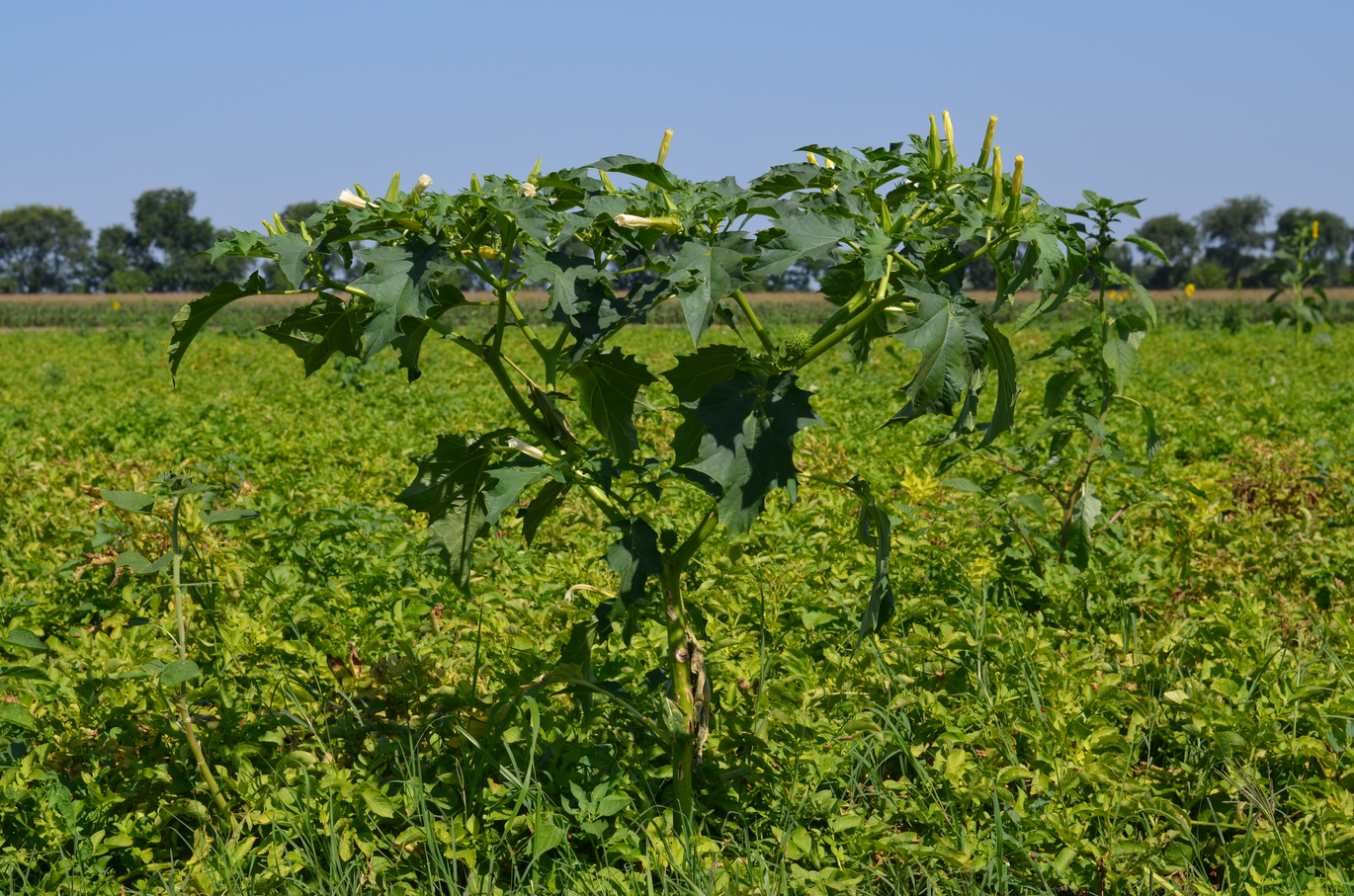The late-germinating, heat-lovingdatura (Datura stramonium) develops particularly well in summer crops and often leads to late weed infestation. Crops such as soybean, millet, the corn or buckwheat are particularly affected. The main distribution area of datura is in the warm - heavily farmed - lowland areas of Austria.
Before harvesting, it is therefore essential to check the crop by pacing it down: Datura is now easily visible. The plants should be pulled out carefully together with the root, wear gloves, the whole plant is poisonous. Do not simply leave the uprooted plants at the edge of the field, a single seed capsule can contain around 300-400 seeds which are also poisonous. Therefore, if possible, remove the plants from the fields and destroy them.
If seeds and plant parts of datura are also harvested, they also enter further processing: Often the usual cleaning of the harvested crop from foreign matter is not sufficient, since plant sap that escapes during the threshing process already leads to corresponding contamination of the harvested crop. Even a few datura plants can lead to an increased tropane alkaloid content.
Due to their toxicity, maximum levels have been set for tropane alkaloids in food and feed. Whole seeds of datura are undesirable in animal feed; a maximum level of 1000 mg/kg applies to feed materials and compound feed. Since 01.09.2022, maximum levels for the tropane alkaloids atropine and scopolamine have applied in millet, sorghum and buckwheat, among others.
